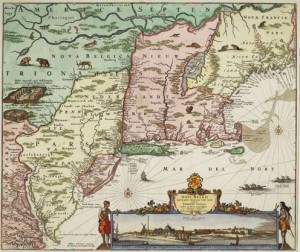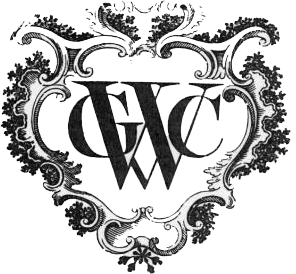 Three companies played a role in the establishment of New Netherland.
In this post you will find a brief overview of these companies and learn about how they contributed to the establishment of New Netherland.
Three companies played a role in the establishment of New Netherland.
In this post you will find a brief overview of these companies and learn about how they contributed to the establishment of New Netherland.
Dutch East India Company
Official Name: Vereenigde Oostindische Compagnie (United East India Company)
Charter Date: 1602
Charter Highlights: The States-General granted the VOC a monopoly on navigation and trade in the Pacific and Indian Oceans.
The VOC had the authority to enlist and command soldiers and sailors in a company army and navy and to make treaties and form alliances with the peoples living throughout their jurisdiction.
Involvement with New Netherland: The VOC hired Henry Hudson to explore a possible northern route to the Pacific Ocean. They ordered Hudson to sail north from the Netherlands, over Scandinavia, around the northern boundaries of Nova Zembla, and through the Bering Strait into the Pacific Ocean.
Hudson encountered ice, freezing temperatures, extreme winds, and a cold, mutinous crew off the coast of Norway. Rather then return to the Netherlands, he sailed west to North America, where he became the first European to explore the Hudson River.
New Netherland Company
Official Name: Nieuw-Nederlandt Compagnie
Nickname: N/A
Charter Date: 1614
Charter Highlights: Monopoly on navigation and trade to New Netherland for 3 years or 4 voyages.
Involvement with New Netherland: Instituted a regular trade with the Native American peoples of the Hudson River Valley.
Built Fort Nassau on Castle Island across from Albany, New York. The fort served as a trading post and residence for the traders and bosloopers (forest walkers) who opted to live in New Netherland year round. The fort fell into disrepair after 1618.
West India Company
Official Name: West-Indische Compagnie
Charter Date: 1621
Charter Highlights: The States-General granted the WIC a monopoly on navigation and trade in the Atlantic Ocean.
The WIC had the authority to make peace treaties and alliances with the peoples living within their trade jurisdiction and the ability to enlist and command soldiers and sailors in a company army and navy.
The States-General also tasked the WIC with colonizing New Netherland to protect this possession from English encroachment.
Involvement with New Netherland: It took the WIC 2 years to raise the funds it needed to begin its operations; it raised over 7 million florins.
In 1624, the WIC built Fort Orange on the west banks of the Hudson River. The fort served as the center of their fur trade operations.
Also in 1624, the WIC settled 30 Walloon families in New Netherland. The WIC scattered these families along the 3 rivers it claimed as part of New Netherland: the Connecticut, Delaware, and Hudson Rivers. The WIC settled 18 of these families around Fort Orange with the hope that the colonists would be able to establish farms and support the WIC soldiers and traders stationed at Fort Orange.
 What If?
What If?
Would you have settled in New Netherland under the same terms the WIC offered the first Walloon families? Why or why not?
The first Walloon families contracted with the WIC to live in New Netherland for a minimum of 6 years on land that the WIC provided them. The first New Netherlanders also agreed to help the WIC build necessary fortifications and buildings and serve in the militia during times of war.
In exchange, the WIC promised to supply the settlers with land, seeds, and livestock, 2 years of free food and necessities, and allowed them to hunt, fish, find and operate salt pans and pearl beds, and look for precious metals. Additionally, the WIC allowed the Walloons to worship freely in their homes or at public Dutch Reformed services.


